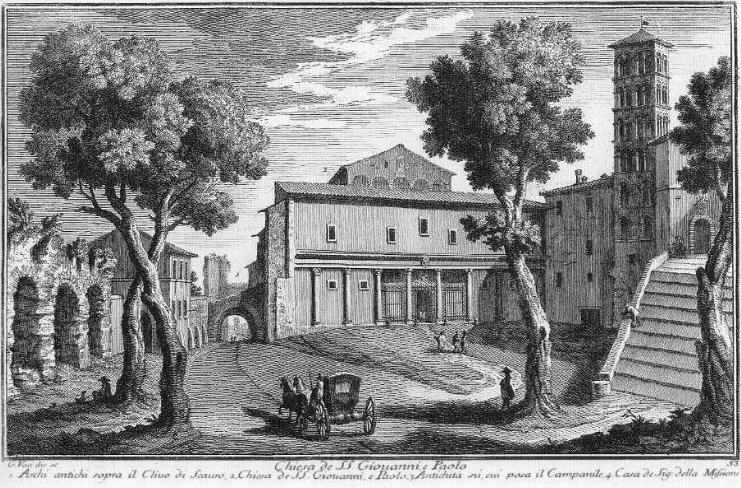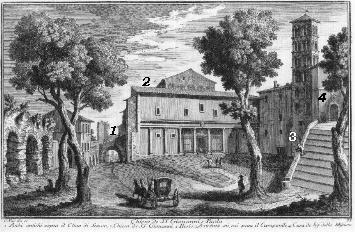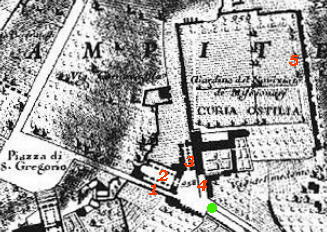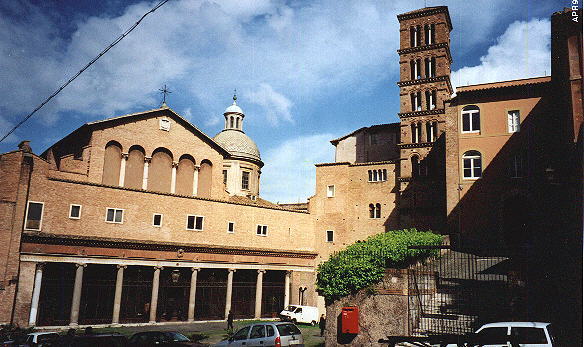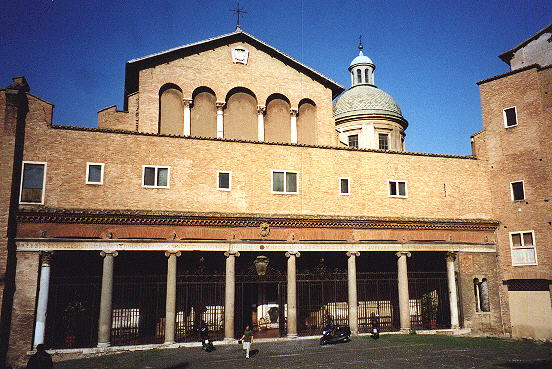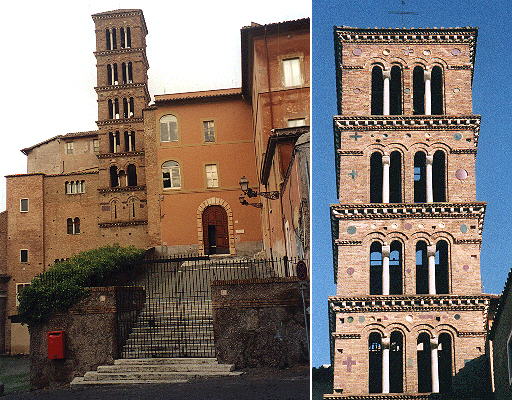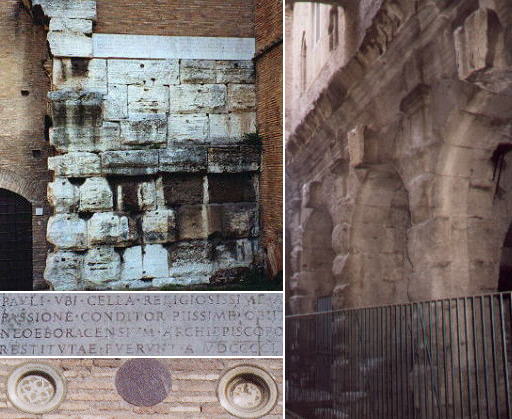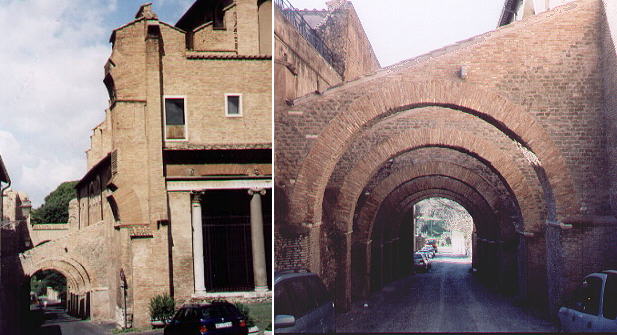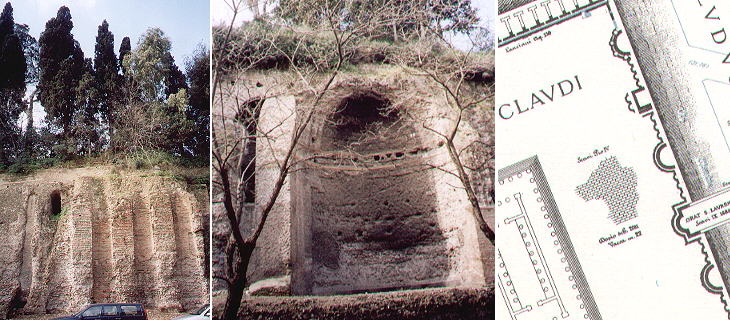  SS. Giovanni e Paolo (Book 3) (Map B3) (Day 1) (View C9) (Rione Campitelli) In this page:
In Vasi's time this area was not much populated, so we do not see
many people in the square or in the streets. The view is taken from the green dot in the small 1748 map here below.
In the description below the plate Vasi made reference to: 1) The arches above Clivo di Scauro;
2) SS. Giovanni e Paolo; 3) The Roman foundations of the bell tower; 4) The entrance to the adjoining monastery.
The small map shows also 5) Tempio di Claudio.
Even today, if not for a wedding, the square is usually empty and
it retains its medieval look.
The portico is of the XIIth century and is embellished by nice columns, some of which are of Roman origin. The chapel with the dome is a XIXth century addition. The portico has been freed from the walls added in 1718.
The bell tower typical of many medieval churches in Rome has a fine, although very simple, decoration. The tower was built on the substructures supporting a flat area at the centre of which there was a temple dedicated to the emperor Claudius. The church was built on a Roman house which can be visited. The substructures below the bell tower were restored in 1950 at the expense of Cardinal Francis Spellman, Archbishop (then Cardinal) of New York: so if you do not know how to say New York in Latin, the plate celebrating the restoration can help you (Neoeboracensium=of New York, because Eboracum=York).
The bell tower is decorated with discs of porphiry and ceramic dishes. During the restoration of the bell tower the dishes were replaced with copies and the originals were moved to the little museum inside the ancient Roman house. It is rather surprising to discover that most of the dishes came from Spain, at the time under the Moors, and therefore they were decorated with inscriptions dedicated to Allah. So the bell tower can be regarded as a very early (although unintentional) attempt to overcome religious differences.
The narrow street goes down to S. Gregorio flanked on the left by old walls which are the remains of the aqueduct of Claudius which brought water to the Palatine. The arches were added in the XIIIth century.
At the death of the emperor Claudius in 54 A.D. his wife Agrippina promoted the erection of a temple dedicated
to him on the northern part of the Celio hill: to provide the temple with a proper basis, the Roman architects modified the hill
to obtain a large flat area at the centre of which stood the temple (completed by Vespasian). While nothing is left of the temple, the impressive
substrucures built on the eastern flank of the hill still show the masonry skills achieved by the Romans.
The external walls were decorated with niches and statues. The last image on the right shows a detail of the map of Ancient Rome by Rodolfo Lanciani.
Next plate in Book 3: Tempio antico di Pallade
Go
to |
